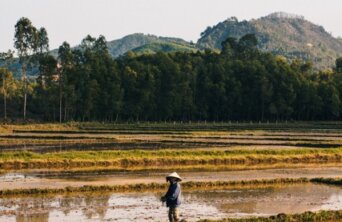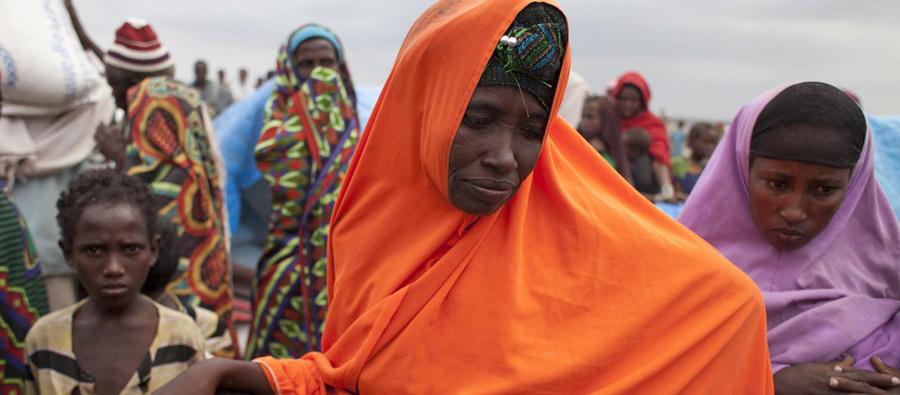- About
- Topics
- Story
- In-Depth
- Picks
- Opinion
- News
- Donate
- Signup for our newsletterOur Editors' Best Picks.Send
Read, Debate: Engage.
| topic: | Climate Change |
|---|---|
| located: | Vietnam |
| editor: | Jitsiree Thongnoi |
El Niño, the climate phenomenon currently wreaking havoc in the Global South, has become the latest blow to the global economy.
El Niño is characterised by warmer-than-average sea surface temperatures in the central and eastern Pacific Ocean that occur on average every 2-7 years, and this year, it has made a comeback.
Its last arrival in 2015-2016 tested the world with unprecedented damage, but it has contributed to the worst heat waves on record this year.
On 6 July, the earth experienced its hottest day, with the global average temperature reaching 17.2°C. It is not typical for the Northern Hemisphere and the Global South to break a sweat simultaneously, but that is seemingly the case now.
Extreme heatwaves in Europe have been deadly. According to a recent report by the UN agency, 60,000 additional people died due to excessive heat in Europe last Summer - despite the continent's early warnings and health action plans. This year, another heatwave has swept Europe, taking a heavy toll, especially in Greece, Italy and Spain.
In the United States, at least 18 people have died from heat in the Phoenix area this year, and 69 more deaths are under investigation as record-breaking heat continues in the Four Corners states, Texas, the lower Mississippi Valley and South Florida this month.
The world will feel the impact of the double whammy of El Niño and rising global heat fueled by carbon emissions next year, according to the UN's World Meteorological Organisation (WMO). "The effect on global temperatures usually plays out in the year after its development and so will likely be most apparent in 2024", said the WMO in May.
In Asia, concerns centre around the effects on commodities like rice, cassava, sugarcane, rubber and palm oil that will put farmers on a slow death as debt mounts.
Food security is a primary concern for China and India as both countries try to come up with initiatives to diversify crops and reduce reliance in the agricultural sector on rainfall.
India, the world's second-largest sugar exporter, will cap sugar exports until at least the first half of the next season, said the government in June, in response to El Niño.
Last year, China invested 110.64 billion yuan ($15.5 billion) in water conservation and implemented 16,000 water projects, according to the Chinese Ministry of Water Resources, as climate patterns have become less predictable.
In Southeast Asia, two of the world's biggest rice producers Thailand and Vietnam, have been preparing for the worst.
In Vietnam, erosion has threatened the Mekong Delta's fertile land for years, and drought will increase salinity, further contaminating rice crops with salt water.
Vietnamese ecology expert Nguyen Huu Thien said there are high risks of severe drought and salinity if an extreme El Niño occurs through 2024. In 2016, El Niño caused damage to 160,000 hectares of rice in the coastal area.
In May, Vietnam announced plans to reduce rice exports to 4 million tonnes a year by 2030 from 7.1 million tonnes in 2022, aimed at "boosting the exports of high-quality rice, ensuring domestic food security, protecting the environment and adapting to climate change."
According to the irrigation department in Thailand, the agricultural reservoirs will have enough water until the rains return in July. Still, the volume will be significantly lower compared to last year.
Thailand has yet to revise its rice export forecast of 8 million tonnes this year despite economic watchers warning drought could impede the target.
Low rainfall could affect tourism in Thailand too. This is already the case in the country's southern region of Ko Samui, where hotels and resorts have had a strained water supply throughout the Summer, and the island's businesses are bracing themselves for a low water supply for the long haul.
According to Associate Professor Aat Pisanwanich of the University of the Thai Chamber of Commerce in Thailand, the country must adopt a strategic policy to prepare for the severe drought caused by El Niño that he expects will last for at least the next five years.
He points to Vietnam for inspiration, where changing the rice production target has addressed the long-term low water supply issue.
"Vietnam is planning to focus on other crops that don't consume [much] water like eucalyptus to support its garment export [...] rice farmers in Thailand could plant other crops like watermelons or beans once the rice harvest season ends [to maximise income during drought]", Says Pisanwanich. Still, there needs to be a national policy to reflect this strategy.
Without a real discussion on water supply management or loan programmes for farmers for the following years of severe drought, Thailand will suffer the harsh economic effects of droughts, warns Pisanwanich.
Image by Pete Walls.

